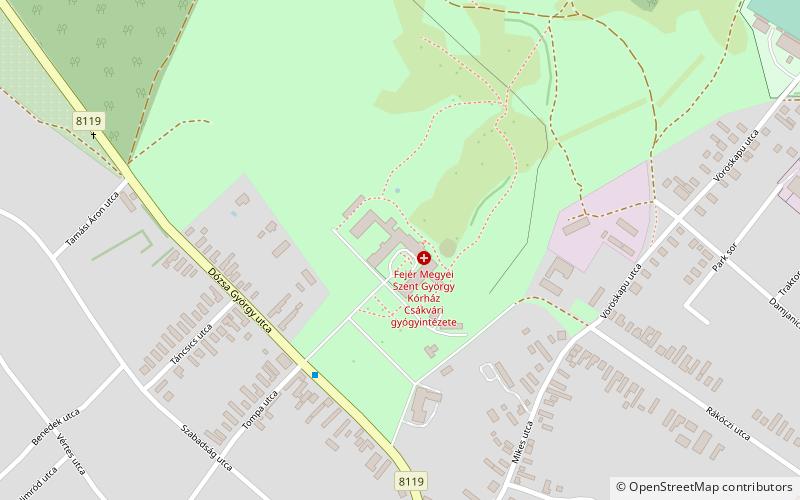Esterházy-kastély


Facts and practical information
The Esterházy castle in Csákvár was designed by Jakab Fellner and built between 1760 and 1765 by János Esterházy, the archbishop of Galánta. The mansion was completed first, and the construction of the castle began in 1778, originally in the Baroque-Rococo style, modelled on the castle in Fertőd. Later it was rebuilt according to the plans of Anton Göttz. Due to the earthquakes between 1810 and 1814, the building had to be restored and after the rebuilding it was rebuilt in neoclassical style, with only the rear courtyard façade remaining in its original form. The restoration work was carried out according to the plans of Charles Moreau. The 365-room château also housed a library, a picture gallery, a theatre, a chapel and a hunting hall. The present kitchen and dining room were originally a riding stable and stables. In front of the castle are two red marble ornamental fountains, each decorated with a bronze masquerade mask.
The building has been a TB hospital since 1954 and is now the Csákvár Institute of the Fejér County St. George's Hospital.
The 77-hectare English park was planted in 1779, following the plans of Isidore Canevale. The garden contains around 400 species of trees, including more than 200-year-old plane and chestnut trees, as well as several sculptures and buildings.
Fejér
Esterházy-kastély – popular in the area (distance from the attraction)
Nearby attractions include: Gesztesi vár.

